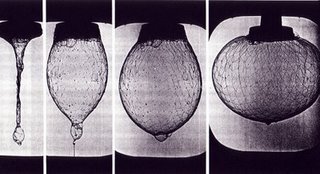20070910

Pin -up Wednesday:
Please pin up BEFORE you come to the gallery, so we can start once we are back.
I asked Kristine for a space - enquire with her which one it is.
Thank you
Checklist for Wednesday
A. Crochet Models:
Crochet (3 models minimum/student):
1. two crochet models with similar rule sets and minimal variation
(for example: start with 20 stitches, crochet into ring, use only single stitches, increase every 2nd stitch for one models, increase every 4th stitch for the other model)
2. one crochet model with a wild rule set, testing extremes
Notation:
1. Create notation for each model (minimum 3)
B. Laser cut models:
One model/student
Soccer Ball, strip arcs with continuous width and changing width,...
Pick one technique to model the plane and perfect it!
soccer ball
strip arcs
C. Diagrams:
1. List of program parts (words)
2. Diagrams (minimum one for each retreat you look at)
In general your diagrams should:
- compare the same set of arguments for each retreat
- incorporate the ecologies of the retreats
- you may start by developing notations on top of plan/section of the building, but the diagram needs to move away from the physical expression of a building
- use maximal 2 line weights and 3 line types
- use b/w graphic with greyscale, use transparencies in Illustrator and Rhino models
- use meshes/ Delaunay triangulation/Voronoi meshes over point clouds instead of shapes to create field conditions
- as a secondary level of information your diagrams can include spatial dimensions that you encounter. This can be done through shading (=underlay for your line work), or else it is through the articulation of the lines (in the varying density of a mesh, for example)
All labels Arial black (10 pt, 14 pt) not more than two sizes per sheet
I look forward to Wednesday!
.: gisela 10:52 PM
|